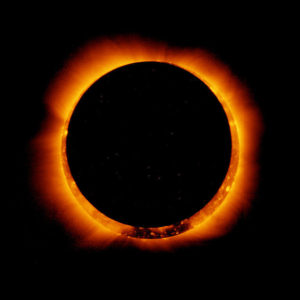
For all of you interested in watching the upcoming solar eclipse on August 21 at Fort de Chartres, Site Specialist, Dr. Todd Hamilton created a Facebook event entitled Solar Eclipse 2017, with the following info:
Currently, the Illinois Department of Natural Resources has no official plans to host a special event on the day of the solar eclipse as Fort de Chartres is typically closed on Mondays. That being stated, all are welcome to view the eclipse on Fort grounds. Amenities will be minimal, and restroom facilities will be restricted to the outhouses located outside the Fort’s walls. A limited number of staff and volunteers will be on hand to assist with special needs.
For more information, please contact Dr. Todd Hamilton at (618)284-7230.
The total solar eclipse details for the August 21, 2017 in Prairie du Rocher:
Latitude: 38° 04′ 59″ N Longitude: 90° 05′ 45″ W
Duration of Totality*: 2m 37s
Partial phase start: 11:50:28AM (CDT), at “1:30 o’clock” on the sun’s disk
Totality Start: 1:17:52PM (CDT)
To add a little history as background for this event, greatamericaneclipse.com revisits the first reports of solar eclipse in the eighteenth century:
“The total solar eclipse of June 24, 1778 was the first to be carefully observed in the newly founded United States. David Rittenhouse, an American astronomer and mathematician, witnessed the eclipse from Philadelphia. Thomas Jefferson, later the third American president, also tried to see this eclipse but was frustrated by clouds in Virginia. He wrote a letter to Rittenhouse remarking on the eclipse and inquiring about a precise clock for astronomical timings.
Two years later during the eclipse of October 27, 1780, an eclipse expedition was sent from Harvard University during the hostilities of the American Revolution. Professor Williams led an expedition to Penobscot Bay in Maine and negotiated safe passage with the British forces occupying that area. Because of what is conjectured to be an error in his tables of the apparent motions of the Sun and Moon, professor Williams narrowly missed totality.
“Immediately after the last observation, the sun’s limb became so small as to appear like a circular thread, or rather like a very fine horn. Both the ends lost their acuteness, and seemed to break off in the form of small drops or stars; some of which were round, and others of an oblong figure.”
— Professor Williams in the Memoirs of the American Academy of Arts and Sciences, 1783
A list of eclipses for New England compiled in the 1806 pamphlet, Darkness at Noon, collection of Michael Zeiler
This description makes clear that the professor saw what are now known as Baily’s Beads. The phenomenon is viewed very soon before and after a total solar eclipse. He was just outside the path of totality!
Other sources: Total Eclipses of the Sun, Mabel Loomis Todd, Roberts Brothers, 1894; Eclipses of the Sun, S. A. Mitchell, Columbia University Press, 4th edition 1935; Chasing Eclipses, The Total Solar Eclipses of 1905, 1914, 1925, Rebecca Joslin, Walton Advertising and Printing Co, 1928; A Hand Book of Solar Eclipses, Isabel Martin Lewis, Duffield & Company, 1924″

